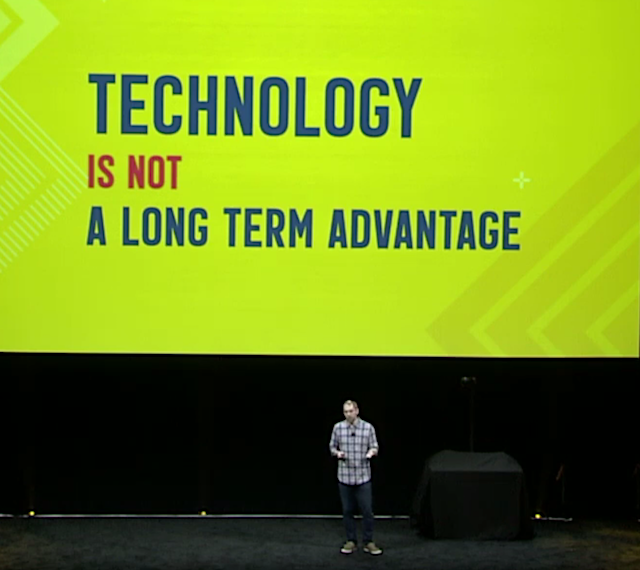DENVER — While many people who work in tech can point to a long and winding road, Jonathan Bryce may be one of the few who can say that cleaning toilets got him where he is today.
Bryce, now the executive director of the OpenStack Foundation, shared his story at the first Open Infrastructure Summit as a way to talk about the past and future of the organization. As a kid, he was very focused on music and his early interest in computers was more or less just another hobby.
That changed a few years later in the mid 1990s.
“During a summer, I worked in San Antonio Texas at a commercial cleaning company cleaning toilets and office buildings and taking out trash for a company that one of my brothers was involved in,” he says. His brother asked if he would help get the company on this new-fangled thing called the world wide web. Could Jonathan create a website and get the company online?
“I got the idea that this commercial cleaning company needed a portal and a dynamic backend, so I built that for them,” he says. Some of their customers really liked this website and said, ‘hey how did you get that how can we do something similar?'”
It turns out that technology was actually a pretty good way to make money as a teenager, definitely easier than mowing lawns and cleaning toilets, “so this is when my life took a little bit of a turn towards towards technology.”
He later realized that technology alone was never going to be a long-term sustainable advantage. Introduced to open source while working at Rackspace, he realized that open source is not a marketing initiative or a business model, but “an innovation philosophy.”
Companies shouldn’t take on the burden of building all their technology alone, however. “Open collaboration is a powerful force for driving technology to change our lives and our world,” he says. With an open ethos, companies can add value by selling a product or using the software to improve internal operations and enhancing services to your internal and external customers.
He pointed to the hundreds of organizations present in the packed auditorium who are already doing so, including CERN, VEXXHOST and LeBoncoin.
If sharing responsibilities and code between outfits as different as a research center, a public cloud provider and an online classifieds startup sounds like a recipe for chaos, Bryce says consider OpenStack today. The global community is in the top three of most active open-source projects, has landed 19 on-time releases, counts thousands of users, millions of cores and a $6.1 billion commercial market.
OpenStack is one of the most successful projects in history, he says, because of the community and the problems it has set out to solve. The community that sprung up around OpenStack grew to over 100,000 people in almost every country on the planet (180) while expanding the kinds of activities people collaborate on.
#OpenInfraSummit is starting!! An amazing week with our communities, all about technology, collaboration and open source. ?? @OpenStack @starlingx @katacontainers @ZuulCI @airshipproject pic.twitter.com/cY1lSKlnG1
— Ildiko Vancsa (@IldikoVancsa) April 29, 2019
Bryce adds, “I think all of these have created an incredible opportunity where individuals can influence the direction of our shared future in technology and our shared future as humans. Here we are focusing on one small but key aspect of those shared futures: how do we build the best infrastructure systems by collaborating across communities, companies, countries.”
A few examples of this collaboration without boundaries? Bryce cites some project examples: Kubernetes paired with OpenStack, Zun as a virtual-kubelet, massive open cloud, Open Heterogeneous Computing Framework and Rust-vmm.
Welcome to the first #OpenInfraSummit pic.twitter.com/Sotkyw5KFM
— Stefano Maffulli (@smaffulli) April 29, 2019
“As we kick off this first Open Infrastructure Summit, that’s what I want to encourage all of us to do this week and over the coming months and years,” Bryce says, noting that 30 open source communities are participating at the Summit. “Let’s all bring our different perspectives, experiences, skills and contributions together to create something powerful, new, and useful and keep pushing our corner of the world to be more open and collaborative.”
Check out the full keynote here.
- OpenStack Homebrew Club: Meet the sausage cloud - July 31, 2019
- Building a virtuous circle with open infrastructure: Inclusive, global, adaptable - July 30, 2019
- Using Istio’s Mixer for network request caching: What’s next - July 22, 2019

)









